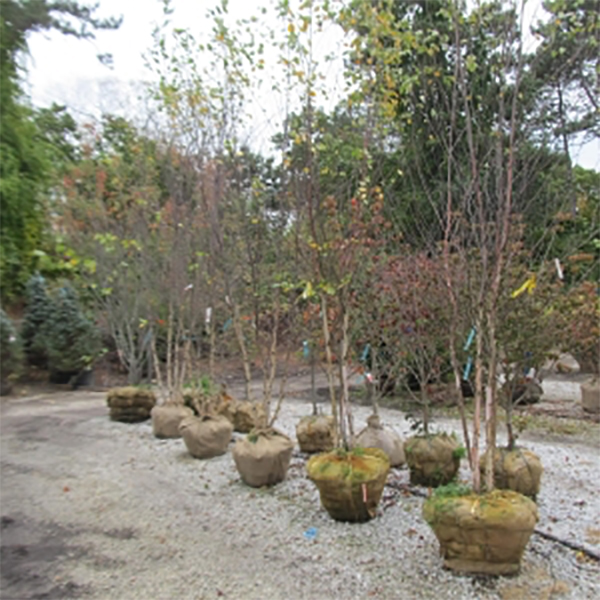By R. Wayne Mezitt
Winter solstice ushers-in the depths of New England’s dormant season with the year’s shortest days and a landscape obviously at rest. Viewed from afar, most gardens appear monochromatic, excepting the evergreens and the muted colors of stems and branches silhouetted against the snow and sky. From closer-by a goodly number of trees exhibit more distinctly colored bark features on their trunks and stems. In the home garden some of these can add significant appeal to the otherwise bland winter garden.
Among the trees and shrubs offering colorful branches are maples (Acer), cherries (Prunus), Stewartia, several dogwoods (Cornus), tree lilac (Syringa reticulata), Seven-son flower (Heptacodium), and the willows (Salix). The birches (Betula) are familiar trees for many people, and the color of their stems and branches are aptly described by their common names: White, Black, Gray, Red, Silver and Yellow.
My favorite birch for winter bark appeal is the native River birch (Betula nigra), also called Water or Black birch. River birch bark appears less white than the more familiar Canoe and European birches (B. papyrifera and pendula), but in many aspects it is a superior tree for the home landscape. The silvery bark on the trunks and branches of young trees curls-back in paper-like spirals, exposing distinctive salmon-ivory and cinnamon-pink inner bark. The colors tend to vary somewhat in tone depending upon the age of the tree and cultivar. Here’s Arthur Plotnik’s fitting description from The Urban Tree Book:
“River birch bark is naturally platy or flaky; in cultivated varieties, it peels in colorful flakes of brown, salmon, peach, orange, and lavender – as if some child had gone wild with crepe paper.”
River birch is a vigorous grower with delicate branching and lustrous foliage that is not susceptible to leaf miner damage. It tolerates moist and urban soil conditions and successfully resists the ubiquitous bronze birch borer (Agrilus anxius). It grows rapidly and matures gracefully, its bark becoming grey-brown and developing deeply ridged furrows. Few trees are so adaptable for use in such varied garden locations.
In addition to trees grown from seed, several Betula nigra cultivars selected for whiter bark or other superior features are readily available at garden centers:
- Heritage™ (‘Cully’) Growing rapidly to 40 ft. high or more, with elegant branches that look attractive year-round, this cultivar is considered one of the best pest resistant birches and has become a landscaping standard in New England. It is widely available as a single trunk tree or in a multi-trunk clump.
- Fox Valley™ (‘Little King’), a smaller and slower growing form, reaching less than 20 ft. at maturity. It forms a compelling specimen with a perfectly rounded natural crown that appears to have been sheared to shape. This cultivar was selected in Illinois and can be grown as a multistem shrub, or (as I prefer) with its trunk(s) pruned up to reveal the spectacular multicolored bark. Because of its small stature it is very well suited for smaller gardens, and it is a Cary Award winner.
- Dura-Heat™, a slower growing form with whiter bark and somewhat smaller leaves, tolerant of urban climate extremes, reaching about 35 ft. or more at maturity.
- ‘Summer Cascade’, upright and fast growing with layers of graceful downward arching branches. Adds an interesting dimension to your garden.
An effectively designed “winter garden” around your home can help enhance your enjoyment of this season of rest. Choosing appropriate trees and shrubs with attractive bark, like River birch, helps create an appealing garden with that distinctive New England character, even on the coldest days of the year.







